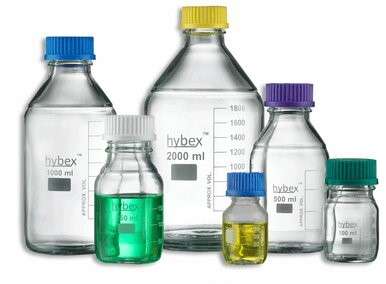In the dynamic realm of scientific research, the significance of cell culture cannot be overstated. It serves as the cornerstone for various experiments, paving the way for breakthroughs in medicine, genetics, and biotechnology. Central to the success of cell culture experiments are the vessels that house the cells—enter the unsung heroes, cell culture bottles. In this blog, we embark on a journey from the laboratory bench to success, unraveling the nuances of optimizing this equipment for research.
The Basics: What Are Cell Culture Bottles?
Before we delve into the optimization strategies, let’s grasp the fundamentals. These are specialized containers designed to nurture and sustain cells outside their natural environment. These bottles act as artificial habitats, providing a controlled setting for cells to proliferate, differentiate, and carry out their biological functions.
The Importance of Cell Culture Bottles in Research
These tools may seem like mundane aspects of scientific research, but their importance cannot be overstated. These vessels serve as the home for cells to grow and thrive in controlled laboratory conditions. Without suitable cell culture bottles, it would be nearly impossible to carry out experiments and make meaningful discoveries.
One key role of this equipment is to provide an environment that mimics the natural habitat of cells within the body. By carefully regulating factors such as temperature, pH levels, and nutrient availability, researchers can create optimal conditions for cell growth. This controlled environment allows scientists to study cellular behavior more accurately and draw relevant conclusions.
It plays a crucial role in preventing contamination during experiments. These bottles are designed with sterile materials that minimize the risk of unwanted microorganisms infiltrating the cultures. Maintaining a clean and uncontaminated environment is essential for obtaining reliable results and ensuring the integrity of research findings.
Key Functions of Cell Culture Bottles
- Containment: Preventing contamination and ensuring a sterile environment for cell growth.
- Nutrient Supply: Facilitating the exchange of nutrients and waste products to support cell metabolism.
- Gas Exchange: Allowing the exchange of gases like oxygen and carbon dioxide, crucial for cellular respiration.
- Temperature Regulation: Maintaining a consistent temperature to mimic the physiological conditions required for cell growth.
Now that we understand the critical role of these bottles, let’s explore how optimizing them can elevate the success of your cell culture experiments.
Understanding Material Matters
This equipment is typically made from plastic, commonly polystyrene or polyethylene. The choice of material can significantly impact cell culture outcomes.
Polystyrene vs. Polyethylene:
- Polystyrene: Known for its optical clarity, polystyrene allows researchers to visually monitor cell cultures without disturbing them. It is also compatible with various detection techniques, such as microscopy and spectroscopy.
- Polyethylene: Recognized for its durability and resistance to chemical interactions, polyethylene is an excellent choice when dealing with aggressive chemicals. It is also more robust, reducing the risk of breakage during handling.
Design Matters: Shape and Size
Beyond the material, the design of this equipment is another crucial factor influencing experimental success.
1. Shape:
Flasks vs. Roller Bottles: While flasks are suitable for small-scale cultures, roller bottles provide a larger surface area for cell attachment, making them ideal for large-scale production.
T-flasks vs. Rectangular Flasks: The shape of the culture vessel can impact the distribution of cells and nutrients. T-flasks have a more ergonomic design, ensuring easy access for pipetting and harvesting.
2. Size:
Surface Area Matters: The surface area of the culture vessel directly influences the cell density and, consequently, the yield of cells. Choosing the right size ensures optimal cell growth and avoids overcrowding.
Ventilation: The Breath of Success
Proper ventilation is essential for cell culture success. The exchange of gases, particularly oxygen and carbon dioxide, is critical for cellular respiration and metabolism.
Vent Caps:
- Microbial Protection: Vent caps play a dual role by allowing gas exchange while preventing microbial contaminants from entering. This balance is crucial for maintaining a sterile environment.
- Optimal Gas Exchange Rate: Adjustable venting systems enable researchers to control the rate of gas exchange, customizing conditions to meet the specific needs of their cell lines.
Sterility: The Foundation of Success
Contamination is the nemesis of cell culture experiments. Optimizing this equipment for sterility is non-negotiable.
Sterile Packaging:
Single-Use vs. Reusable: While reusable bottles may seem economical, single-use sterile bottles eliminate the risk of cross-contamination. The convenience and peace of mind they offer outweigh the cost considerations.
Gamma Irradiation: Sterilization through gamma irradiation ensures that the bottles are free from viable microorganisms, providing a clean slate for cell culture experiments.
Surface Treatment: Creating a Cell-Friendly Environment
Cell attachment and proliferation depend on the surface properties of the culture vessel. Optimizing this aspect can significantly enhance cell culture success.
Surface Coatings:
Tissue Culture-Treated Surfaces: These surfaces are treated to enhance cell adhesion, promoting proper growth and preventing cell detachment.
Non-Adherent Surfaces: For certain applications, non-adherent surfaces are preferred to prevent cell attachment, facilitating easy harvesting for downstream processes.
Compatibility with Equipment
Consideration for compatibility with other laboratory equipment is often overlooked but can impact workflow efficiency.
Multi-Functionality:
Bioreactor Integration: Some cellular cultivation vessels are designed for seamless integration with bioreactor systems, allowing for continuous and automated cell culture processes.
Compatibility with Microscopes and Imaging Systems: Ensuring that cell culture bottles are compatible with microscopy and imaging systems streamlines data collection and analysis.
The Human Touch: Ergonomics in the Lab
In the hustle of optimizing technical aspects, the ergonomic design of this equipment should not be underestimated.
User-Friendly Features:
Easy Handling: Bottles with ergonomic designs, such as grip-friendly surfaces and standardized dimensions, simplify handling and reduce the risk of accidents.
Graduated Markings: Clearly visible and accurate volume markings on the bottles aid in precise measurements and dosing.
Sustainability in Science
As the scientific community becomes increasingly aware of environmental impact, choosing sustainable options for laboratory consumables is a responsible choice.
Sustainable Materials:
Recyclability: Opting for bottles made from recyclable materials reduces the ecological footprint of laboratory practices.
Bio-based Alternatives: Exploring bottles made from bio-based plastics contributes to the sustainability of research activities.
Summary
The journey from the laboratory to success in research is paved with careful consideration and strategic choices. Optimizing cell culture bottles may seem like a small detail, but its impact on the overall research process is substantial. By prioritizing factors such as material, sterility, shape, cap design, and surface treatment, researchers can create an environment conducive to optimal cell growth and experimental success.
As we continue to push the boundaries of scientific knowledge, let’s not overlook the significance of the vessels that cradle the building blocks of our research – the humble in-vitro cultivation vessels. In their optimization lies the potential for groundbreaking discoveries and a brighter future for scientific exploration.










